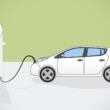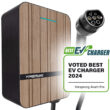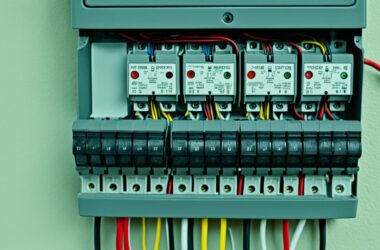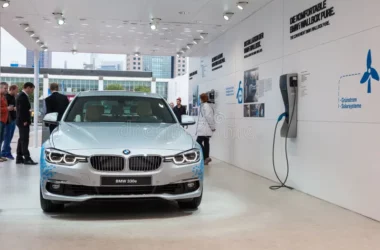Introduction to 3-Phase Electricity
“What is 3 phase electricity in the UK?” is a crucial question often asked by those delving into electrical systems. In the United Kingdom, three-phase electricity serves as a pivotal component in distributing power, especially for industrial, commercial, and high-energy-consuming residential properties. Typically utilized for commercial purposes, three-phase electricity has gained prominence as electric vehicles and smart home technology become more prevalent. Consequently, an increasing number of residential properties in the UK are exploring three-phase installations to meet their growing electricity demands.
Three-phase electricity is a vital aspect of electricity distribution, particularly for industrial, commercial, and high-energy-consuming residential properties. The 3 phase electricity is mainly used in commercial purposes. With the rise of electric vehicles and smart home technology, more residential properties are considering 3-phase installations to accommodate increased electricity demands.
History and Development of Three-Phase Electricity
Developed in the 1880s by various inventors, three-phase electrical power involves distributing voltage across three wires, each phase being 120 degrees out of phase with the others. This system allows for efficient transmission and distribution of electricity, as well as easy stepping up and stepping down of voltages using transformers.
Advantages of Three-Phase Power
Compared to single-phase power systems, three-phase power offers several advantages. It is more economical, requiring less conductor material to transmit the same amount of power. Three-phase power is commonly used to directly power large induction motors and other heavy loads, making it essential for industrial and commercial applications.
Difference Between Single-Phase and Three-Phase Electricity
Single-phase and three-phase electricity differ in terms of power delivery and load capacity. Single-phase power is typically used in residential homes, while three-phase power is more common in commercial and industrial buildings due to its ability to handle higher loads. Three-phase power also offers greater consistency in power delivery, making it preferable for many applications.
Comparison of Three-Phase and Single-Phase Power Supplies
Three-phase power supplies are more efficient and can transmit three times as much power as single-phase systems using only one additional wire. The consistency of power delivery in three-phase systems is superior to that of single-phase systems, which experience peaks and dips in voltage.
Three-Phase Electric Meter
A three-phase electric meter is used to measure the power of a three-phase electrical supply. Unlike single-phase smart meters, which are widely available for residential use, three-phase smart meters have been primarily used for commercial and industrial applications. However, recent advancements in technology have made three-phase smart meters accessible for residential properties with higher electricity demands.
Retrofitting Three-Phase Smart Meters
Businesses and homes with three-phase electricity can now benefit from the installation of three-phase smart meters (SMETS2). These meters offer various advantages, including the ability to monitor energy consumption, reduce costs, and support decarbonization efforts.
Difference Between AMR and Smart Meter Technology
While advanced metering infrastructure (AMI) devices and smart meters offer similar benefits, they operate differently and rely on different technologies. Despite this, non-domestic customers have the option to choose between the two technologies, allowing for flexibility in energy management solutions.
Benefits of Smart Meters for Businesses
By installing smart meters, businesses can join the smart energy revolution, enabling them to reduce energy consumption, costs, and carbon emissions. Smart meters facilitate real-time monitoring and management of energy usage, promoting greater efficiency and sustainability.
Conclusion
Understanding the differences between single-phase and three-phase electricity is essential for residential and commercial property owners. With advancements in technology, such as the availability of three-phase smart meters, businesses and homes can optimize their energy usage, reduce costs, and contribute to a more sustainable energy future. By embracing smart energy solutions, property owners can enhance efficiency, lower emissions, and support the transition to cleaner, smarter energy systems.










